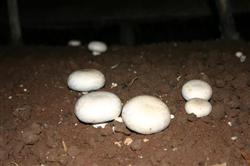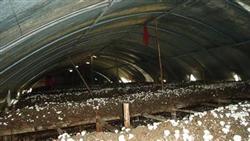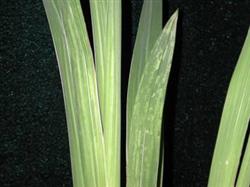Eight key points of Disease and Pest Control of Pleurotus ostreatus

By strengthening the comprehensive management of the cultivation of Pleurotus ostreatus, creating an environment conducive to the growth of Pleurotus ostreatus but not conducive to the reproduction of diseases and insect pests is the key to the growth of organic Pleurotus ostreatus. 1. Do a good job in environmental hygiene. Seed production and operators must establish a normal clean and hygienic management system, constantly remove pollutants and disinfect them with chemicals, wash and disinfect mushroom rooms, appliances and all indoor equipment frequently, and pay attention to shoes soles and neat clothes when entering the mushroom room. It's best to change them in time. two。 The choice of disinfection method. Priority is given to high-pressure steam sterilization, atmospheric pressure intermittent sterilization, pasteurization and ultraviolet lamp sterilization, chemical disinfection gives priority to the use of alkali and phenolic drugs, and avoids the use of heavy metal salts and other disinfectants. 3. Take care of the raw materials. Pleurotus ostreatus culture materials must avoid damp mildew or breeding pests sawdust, wheat straw, cow and horse dung accumulation, the bottom should be covered with plastic film or felt moistureproof, above to cover rain or sundries fall into. Chicken dung, cow and horse dung, rice bran, wheat bran, cake and other molds should be sealed and stored. The culture materials should be sterilized at high temperature or fermented and matured, and the secondary fermentation should be done well. The covering material must be sterilized by steam or formalin. 4. Adjust the amount of water and pH. Moisture should be appropriate, acidity and alkalinity should be appropriate, and should be detected and adjusted at any time. The mushroom room should be well ventilated at all times, and the air relative humidity should not exceed 95%. 5. Take good care of the medium. Out of the pot bottle or sterilized medium should be protected to prevent secondary pollution, to cover gauze or film, into the box fumigation should also be scrubbed with bromogeramine and other potions to prevent dust pollution. 6. Strictly follow the operating procedures. Vaccination work is highly technical, must be patient and meticulous, and remember to touch the adhesive tape. For all utensils and containers, those that can be washed should be washed, those that can be fumigated should be fumigated, those that can wipe alcohol should be rubbed with alcohol, and those that can be lit with alcohol should be burned with fire. 7. Artificial physical methods were used to control diseases and insect pests. Such as using black light to trap and kill mosquitoes and flies, culture materials are fully fermented to kill nematodes and gall mosquitoes, remove rotten parts, and disinfect with lime water. Improve the environment, adjust the temperature (such as lowering the temperature to prevent walnut fleshy bacteria), humidity (such as reducing humidity to prevent Streptomyces) pH value (such as lowering the PH value to prevent white mold, etc.). 8. The use of highly toxic pesticides is strictly prohibited. Instead of using organic mercury or organophosphorus preparations and pesticides that remain for a long time and are not easily decomposed, priority is given to the use of botanical pesticides such as pyrethrum, ivy, tobacco extracts and microbial pesticides (such as Bacillus thuringiensis and Beauveria bassiana).
- Prev

Key points of planting techniques of Pleurotus ostreatus in greenhouse
1. The specifications of the greenhouse: 20 meters long and 12 meters wide, covering an area of 1.2mu (including mixing yard, living room, road, etc.) to build eight eight-story bamboo frames, with a planting area of 1000 square meters. Second, culture material formula (1000 square meters): Rice straw 22500 kg, cow dung 3000 kg, vegetable cake 1000 kg, compound fertilizer 400kg, urea 1.
- Next

Prevention and treatment of Lily asymptomatic virus
Lily is native to our country. Distributed in southeast, southwest, Henan, Hebei, Shaanxi, Gansu, there are wild and cultivated, mainly do cut flowers and decorate the garden for potted ornamental. Bulbs for edible and medicinal purposes, flowers contain aromatic oils as spices, fruits and so on. Cold-tolerant autumn planting scaly bulbous flowers. There are many varieties cultivated, and the flowers are removed from white.
Related
- Fuxing push coffee new agricultural production and marketing class: lack of small-scale processing plants
- Jujube rice field leisure farm deep ploughing Yilan for five years to create a space for organic food and play
- Nongyu Farm-A trial of organic papaya for brave women with advanced technology
- Four points for attention in the prevention and control of diseases and insect pests of edible fungi
- How to add nutrient solution to Edible Fungi
- Is there any good way to control edible fungus mites?
- Open Inoculation Technology of Edible Fungi
- Is there any clever way to use fertilizer for edible fungus in winter?
- What agents are used to kill the pathogens of edible fungi in the mushroom shed?
- Rapid drying of Edible Fungi

